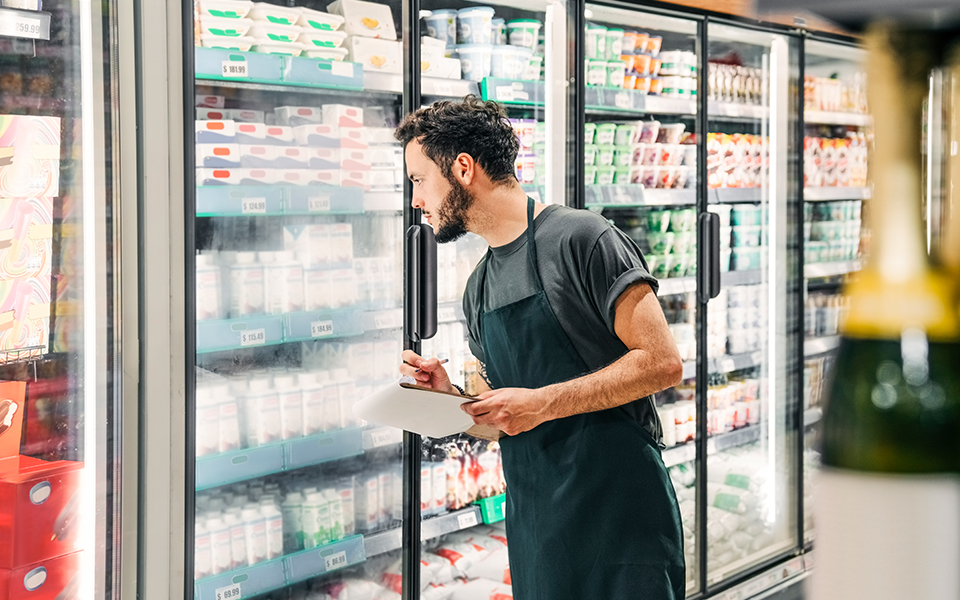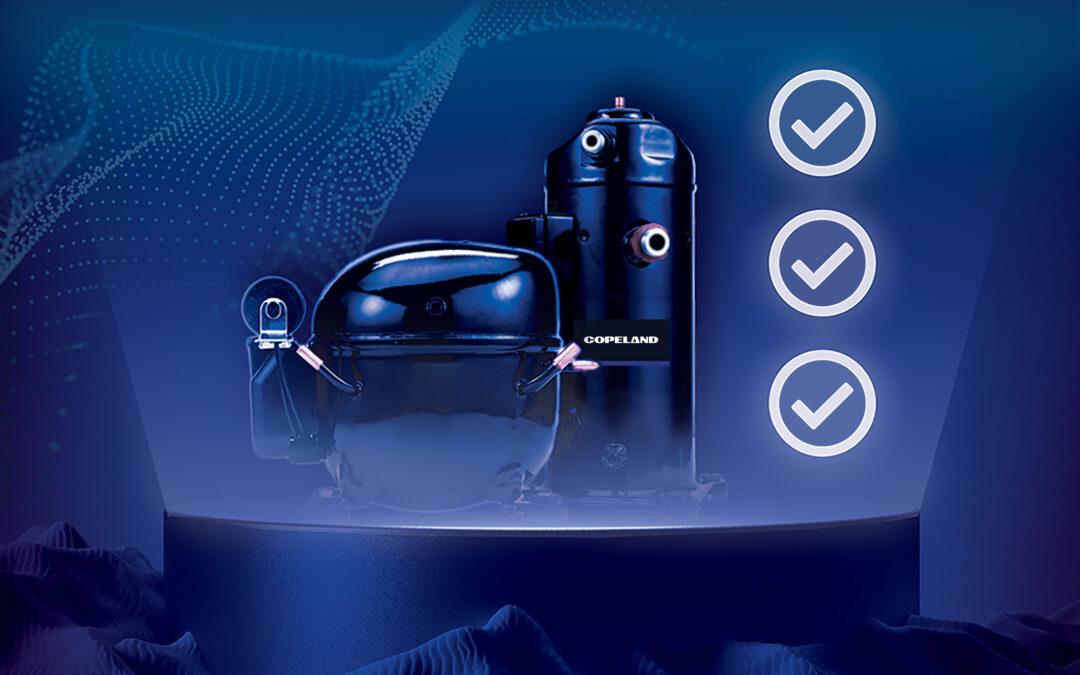*On June 1, 2023 Emerson’s Climate Technologies business became a new standalone company – Copeland. Though our name has changed, we are building on more than a century of HVACR innovation and industry leadership, and Copeland continues to offer the same products, industry stewardship, and learning opportunities you’ve grown to trust. Information found on this webpage posted before June 1, 2023 may contain our old name or branding, but you can be at ease knowing it was created with the knowledge and expertise of Copeland.

Food retailers seeking to make the move to CO2 refrigeration have two primary system types from which to choose: CO2 transcritical booster and cascade systems. A closer look at each option may help you decide which is a better fit for your operations.
CO2 transcritical booster
A complete R-744 system, CO2 transcritical booster utilizes direct expansion (DX) for low- and medium-temperature suction groups. This system is called transcritical because it is designed to operate at pressures above CO2’s critical pressure (1,500 psig). Heat produced from low-temperature case compressors is rejected into the medium-temperature suction group’s compressors. The medium-temperature compressors are the workhorses of the system and must be sized to handle:
-
- The total heat of rejection of low-temperature loads
- 100 percent of the medium-temperature load
- The flash tank bypass load
Only one condenser or gas cooler is needed for all low- and medium-temperature cases. CO2 pumped technology — where CO2 is used as a secondary fluid — is also available on both low- and medium-temperature stages.
CO2 cascade
CO2 cascade systems utilize two distinct refrigeration circuits: a CO2 circuit for the low-temperature suction group, and an HFC-based circuit (such as HFC-134a) for the medium-temperature needs. It’s called cascade because the heat produced from the low-temperature circuit is discharged into the suction stage of the medium-temperature circuit via an intermediate heat exchanger. Medium-temperature compressors send gas to an air-cooled condenser on the roof. Like a standard refrigerant, CO2 is maintained below its critical point (or subcritical mode) of 88 °F.
For an all-natural cascade alternative, some retailers have even experimented with using NH3 (ammonia) as the medium-temperature refrigerant. These low-charge ammonia circuits are typically housed on the facility roof, far removed from the store’s occupied spaces.
Evolution of electronics
Unlike traditional HFC systems, CO2 system architectures introduce the requirement for additional electronic components, including: case controllers, pressure transducers, temperature sensors and electronic expansion valves. While these components may contribute to increased system costs, they’re necessary for optimizing the refrigerant quality and pressures to the cases. From an end user and servicing perspective, these case controllers provide quick access to precise temperature controls and ongoing, optimized energy efficiencies.
The benefits of going green
For those U.S. retailers who have experimented with CO2 refrigeration, the benefits are obvious. New Seasons is a Northwestern grocer whose first CO2 system earned a GreenChill Platinum Certification award for green refrigeration. Their CO2 transcritical booster system delivered the following improvements:
-
- Up to 30 percent lower total equivalent warming impacts (TEWI)
- 95 percent fewer refrigerant emissions
- Smaller refrigeration footprint
The retailer is currently planning additional CO2 installations.
Read the full Accelerate America article on CO2 system architectures [pg.16].

Electrical component considerations for A2L system safety
Electrical component considerations for A2L system safety As a new refrigerant category in the...

A2L refrigerant regulation updates: what you need to know today
Preparing for the approval and safe use of A2Ls in commercial refrigeration applications The move...

Address Efficiency Mandates with Compression Technologies
Strategies for complying with DOE and ENERGY STAR® in self-contained and remote condensing units...
